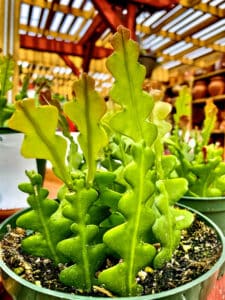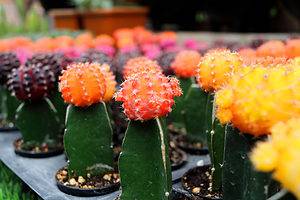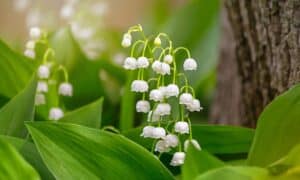Sedum is not a specific plant but a large genus of succulent species. Most species in the genus sedum are great plants for beginners, requiring little care and attention to thrive.

, like other sedum species, grows in rocky, well-drained soil.
©iStock.com/apugach
The genus name comes from the Latin word, sedeo, meaning “to sit” or “I’m sitting.” This refers to many sedum species that appear to “sit” on the ground. These species make excellent ground cover since their trailing foliage will sprawl out on the ground as they grow.
There are 400+ species in the genus sedum. While they are quite diverse, the species roughly divide into two categories: low-growing sedum and upright sedum.
Low-growing sedum will grow wide rather than tall, maxing out at 3-6 inches in height, but spreading to cover as much as two feet of the ground. Upright sedum, on the other hand, can grow as tall as 2-3 feet.
Another example of diversity within the genus is that sedum flowers can range from red to pink to yellow.
Some species have flat leaves, such as the Japanese stonecrop. Others have thick leaves, such as the jellybean plant.

The jellybean plant is a sedum species with thick leaves.
©iStock.com/Wirestock
Despite the number and diversity of sedum species, most are easy-to-care-for, hardy plants. Here are some things to keep in mind to set you up for sedum success.
| Sedum Facts | |
|---|---|
| Botanical name | Sedum spp. |
| Common Names | Stonecrop, roseroot |
| Sunlight | Partial to full sun |
| Soil | Sandy or rocky, well-drained |
| Water | Sparingly |
| Indoors or Outdoors | Indoors in a sunny window. Outdoors in Zones 3 and up (depending on the species). |
Sunlight
The majority of sedum species require lots of sunlight, needing at least six hours a day. In warmer climates, some shade from the harshest afternoon sun can keep the plants from getting scorched. As a general rule, though, these plants do well in full sun.
Soil Type
As long as there is adequate drainage, sedum succulents thrive in nutrient-poor conditions. They will feel right at home in sandy or rocky soil.
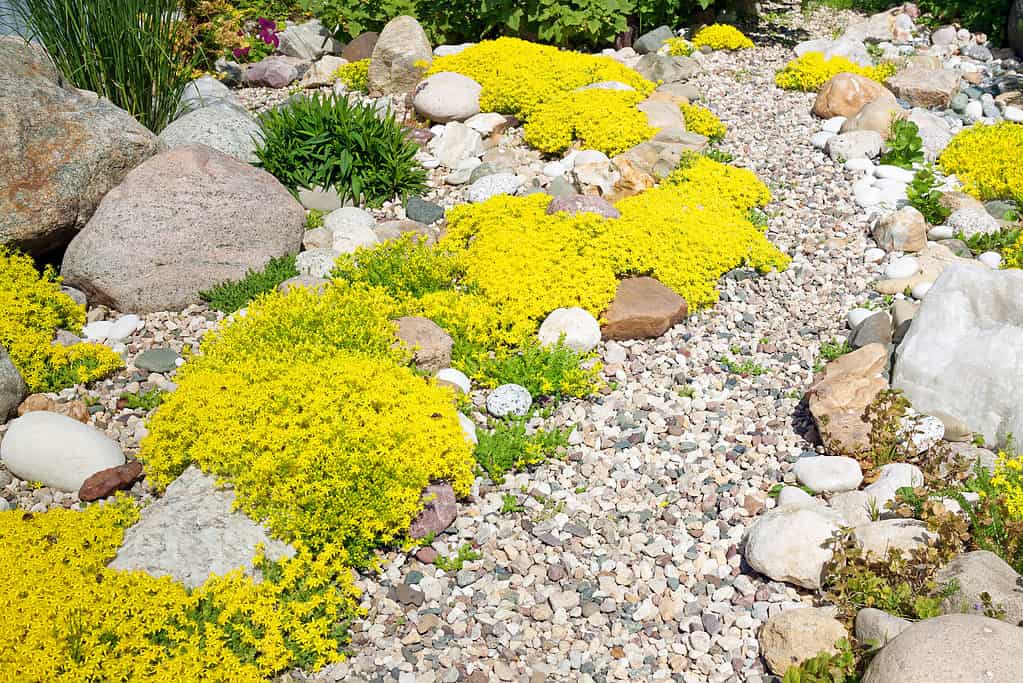
Sedum succulents thrive in rocky soil.
©iStock.com/yanikap
When grown in containers, a prepackaged cactus soil mix is a good choice. Perlite or peat can be added to increase drainage. Clay or terracotta pots work well since they wick away excess moisture from the soil.
Water
When planted outdoors, established sedums rarely need watering. During extended periods of dry weather, you may need to soak the plants occasionally. But under normal conditions, you’ll hardly need to water them at all. They are drought-tolerant since water is stored in the leaves.
When growing sedums indoors, check the soil before watering. If the top inch isn’t completely dry, hold off on watering. When the soil dries out, soak the roots of the plant. Don’t pour water directly onto the leaves, as that can lead to rot. Make sure there are drainage holes in the container.
Placement
Many species of sedum are cold-hardy plants. Some can even be grown outdoors year-round in climates that experience mild frost.
When growing outdoors, choose a spot that receives full sun. This is especially important in colder areas. The plants will need the sun to thrive in the winter months. In hotter climates, a site with a little shade from the afternoon sun is preferable.
Space individual plants 20-30 inches apart, allowing them room to spread.
Many sedum species make excellent houseplants. Ideally, the plants would be placed in a south-facing window to ensure full sun. If this is not possible, grow lights can be used as a supplement.
Sedum species are regarded as non-toxic, so they make great plants for households with cats or dogs.
Propagation
When given ample space, many species will self-propagate. They will seed and spread along the ground naturally.
Most sedum species are also easy to propagate using cuttings.
Using a sharp knife or shears, cut a healthy leaf from the succulent and plant it in a moist soil mix.
You can also cut a stem from the base of the mother plant. Plant the stem in a new container, with the cutting side down.
Whether you use leaf or stem cuttings, keep the soil moist until roots develop. After 2-3 weeks, tug very gently on the cutting. If you feel some resistance, that’s a sign that roots are taking hold. Once rooted, care for the daughter plant just as you do the mother plant.
Common problems
Sedums, by and large, are resistant to most diseases.
The most common issue growers run into is overwatering. A large majority of sedum species need to be watered very infrequently (and sometimes not at all, when planted outdoors). If the soil retains too much moisture for too long, it can lead to fatal root rot.
Sedum succulents are susceptible to a variety of pests, including slugs and snails. While it is difficult to completely eradicate these gastropods from your garden, there are steps you can take to minimize their presence and the destructive impact they can have on your plants.
The go-to remedy for many is salt. While it will certainly kill these pests instantly, it could also harm your sedum. Instead, try a more creative option.
Placing crushed eggshells around the plant base can be effective. The shells are sharp, and these pests have soft bodies. It’s a painful experience they would rather avoid.

Crushed eggshells can be an effective deterrent for snails and slugs.
©iStock.com/yuphayao phankhamkerd
Beer traps (not bear traps!) are also a legendary solution, although their effectiveness is debatable.
To set a beer trap, bury a small cup or bowl in the soil all the way to the rim and fill it with beer. The yeast in the beer will attract snails and slugs. The goal is for them to crawl into the container and drown, but that often isn’t the outcome. Sometimes they stop, imbibe a bit, and slide on their merry way. So, instead of getting rid of these slimy pests, you simply created a happy hour for them. What a waste of perfectly good beer! But there are gardeners who swear by this old method, so if you’re feeling adventurous and you don’t mind sacrificing a bottle of suds, you can always give it a try.
Other pests that are drawn to sedum include mealybugs and aphids. Neem oil is a great option to treat these infestations. Insecticidal soap can also be quite effective.
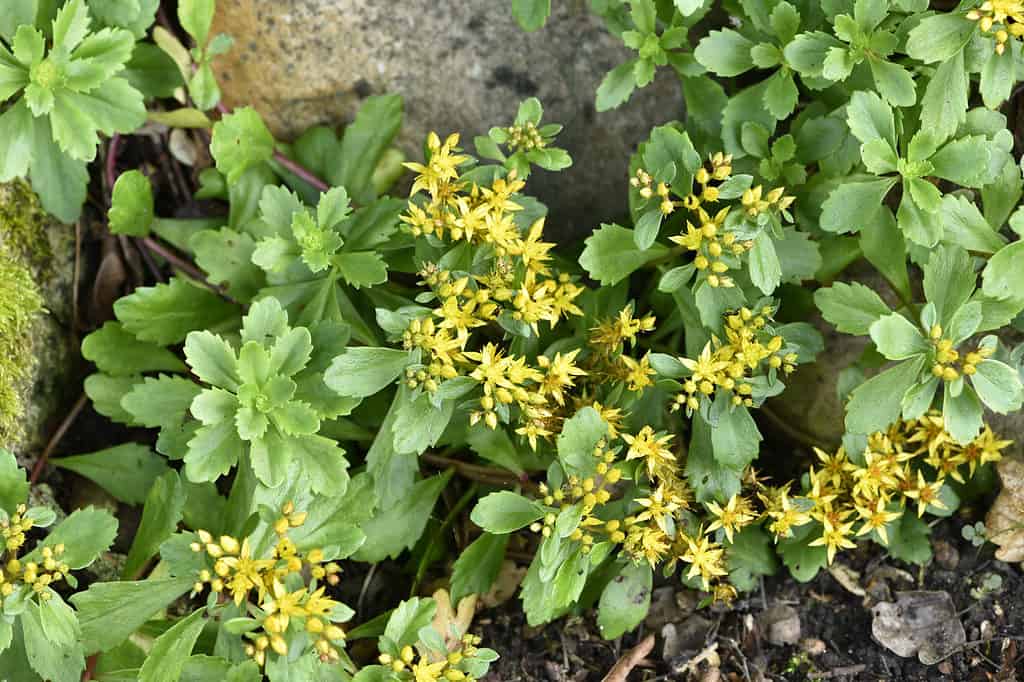
Many sedum species spread across the ground with minimal care.
©iStock.com/Michel VIARD
In the world of succulents, sedums are among the most hands-off, easy-to-grow plants you’ll ever find. Indoors or outdoors, in cool or warm climates, there is a sedum that will fit your situation and beautify your surroundings.
Up Next:
- Discover the Dangerous Critters Lurking Beneath Your Leaves
- 10 Best Plants That Survive Winter Outside
- Kalanchoe
The photo featured at the top of this post is © iStock.com/Kateryna Kukota
Thank you for reading! Have some feedback for us? Contact the AZ Animals editorial team.



